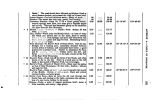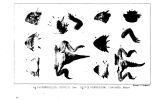| OCR Text |
Show INDIAN SIGNAL- FIEES- OGDEN'S HOLE. 81 until we struck upon the head of a broad, green, beautiful valley, with an even, gentle descent, which led us, in about three miles, down to Ogden's Greek, just before it makes a cafion, previous to entering Ogden's Hole. There we encamped for the remainder of the day, with abundance of excellent grass, wood, and water. The same alternations of red and white sandstone appeared here as were seen on the Red Chimney Fork. Just before descending into this valley, we had observed from the high ground, the smokes of numerous Indian signal fires, rising in several directions- an intimation that strangers had been discovered in their country. A strict watch was therefore maintained during the night, lest our animals should be stolen. Wild cherries were found in tolerable abundance, and the trail was strewn over with their smaller branches, thrown away by the Indians, who had evidently passed only a day or two before, in considerable numbers. Monday, August 27.- We followed down Ogden's Greek about a mile, when we found that the broad valley was shut up between two ranges of hills, or rather mountains, leaving a fiat, low, level bottom, densely covered in places by willows, through which the stream meanders from side to side, for three miles, washing alternately the base of either range. After passing through this cafion, the ridge separated, and before us lay a most lovely, broad, open valley, somewhat in the shape of a crescent, about fifteen miles long, and from five to seven miles in width, hemmed in on all sides, especially on the south and west, by lofty hills and rocky mountains, upon the tops and sides of which the snow glistened in the rays of the morning stn. The scene was cheering in the highest degree. The valley, rich and level, was covered with grass; springs broke out from the mountains in every direction, and the facilities for irrigation appeared to be very great. Ogden's Creek, breaking through its barriers, flows in a crystal stream at the base of the mountains on the south, for rather more than half the length of the valley, when it forces a passage through the huge range which divides this " gem of the desert" from the Salt Lake Valley, by a caflon wild and almost impassable. On the north, a beautiful little brook, taking its rise in the elevated ground separating this from Cache Valley, washes the base of the western hills, and joins Ogden's Greek just before it enters the caflon, after passing through which the latter discharges its waters into the Weber River, a tributary of the Great Salt Lake. Numerous bright little streams of pure running water were met with in abun- 6 |


























































































































































































































































































































































































































































































































































































































